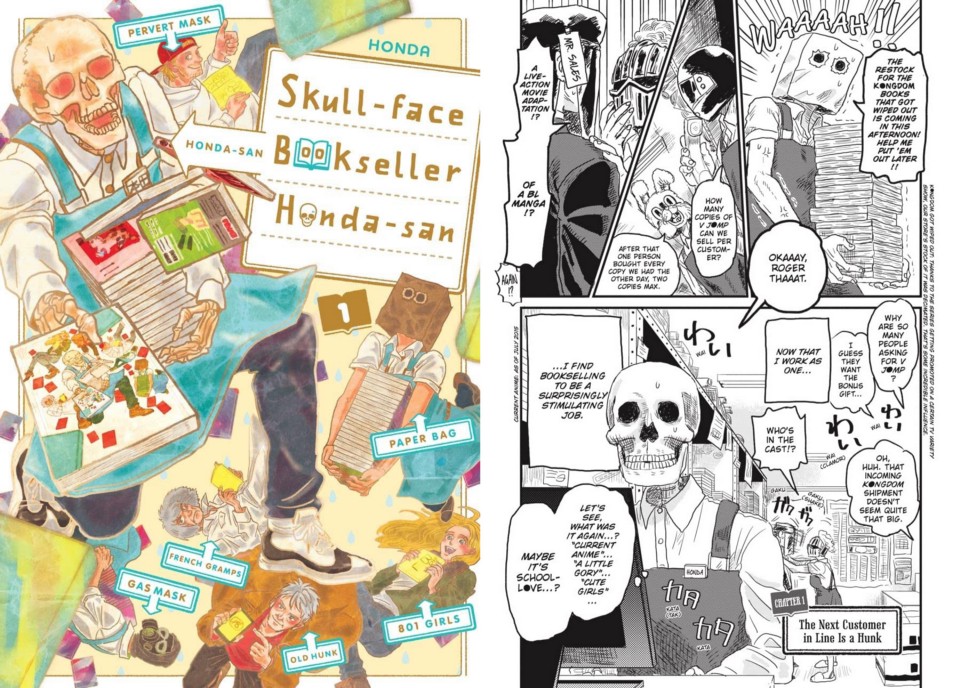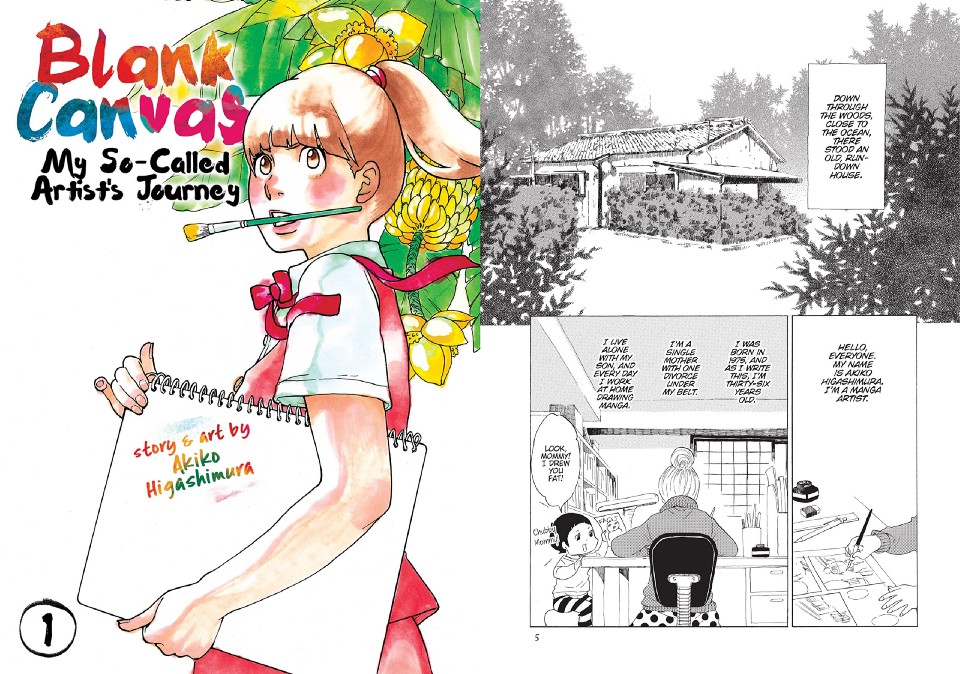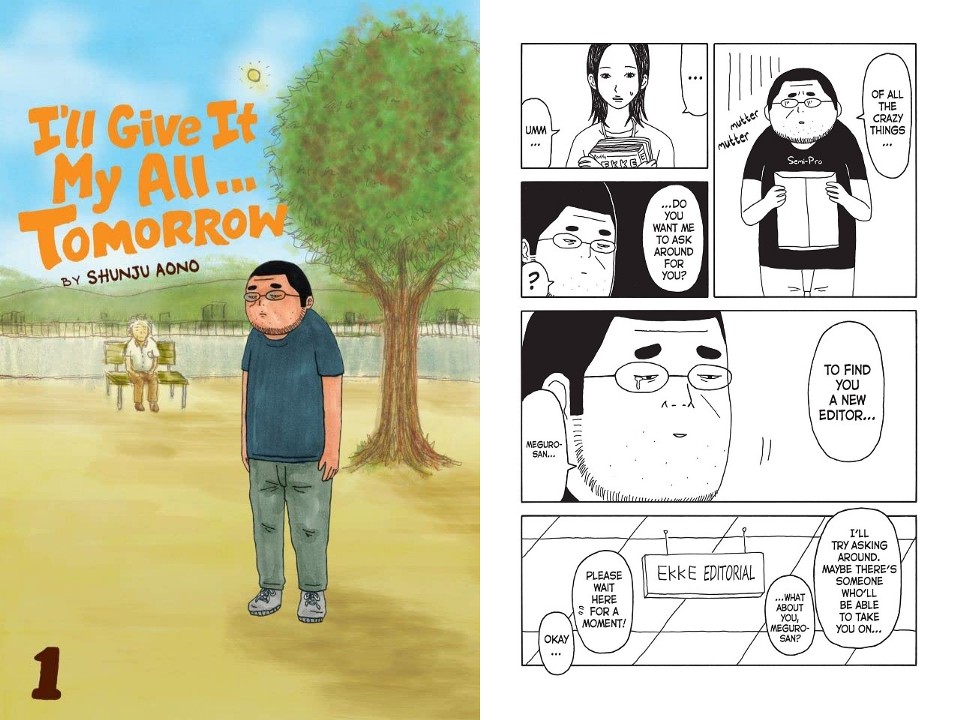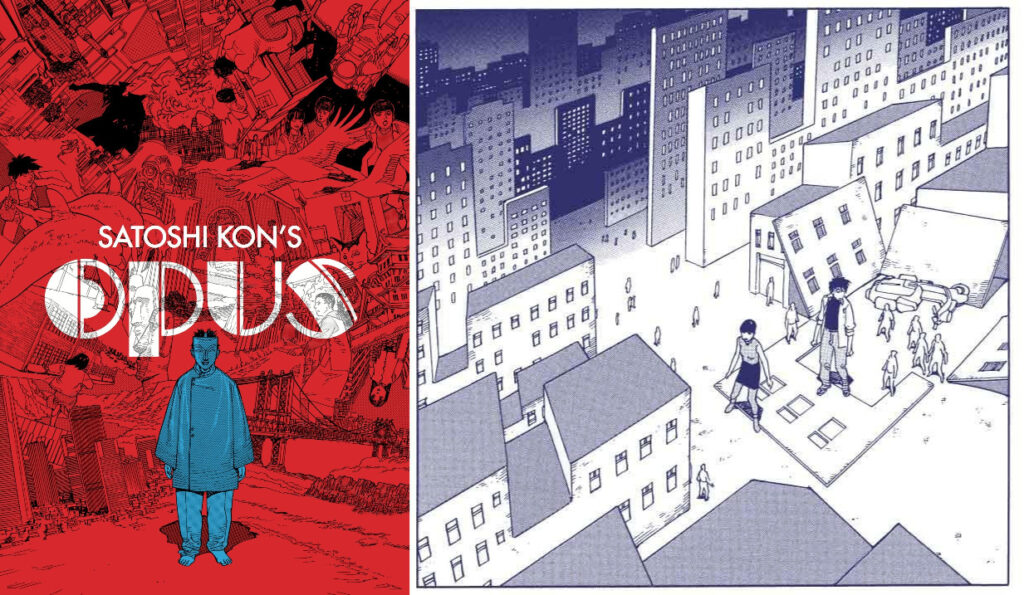As a medium, manga has shown us again and again, the incredible power of storytelling in this visual format. So much so that it has carried a lot of weight, influencing both the comics and animation industries around the world for decades. It seems like nowadays, your favorite artist’s artist is either someone from the land of the rising sun or there is a manga series that is loved and adored that helped them become the creative that they are today.
I’ve read so much manga over the years, and I have been so fascinated by how Japanese manga has not only influenced the world twice over but served to educate readers of the culture that produces manga. It has also had an impact in the lives of its creators, everyone involved in producing it, and of course, its consumers.
As someone who has literally been reading manga since I was around the age of one Card Captor Sakura aka Sakura Kinomoto, I feel endeared to this medium and all the stories that have entertained me, inspired me, and left me all the way in my feelings. It has taught me life lessons with characters I’ll never forget. For the manga lovers out there, here’s a short list to spotlight some series about manga: the making of it, the selling of it, and the ways it offers insight into the lives of its creators–and even our own..
1.) BAKUMAN
(20 VOLUMES) VIZ MANGA
Alright, let’s get this one out the way, you’ll see this on every list about manga that places manga at the front and center anytime in the 2000s. Created by Tsugumi Ohba and Takeshi Obata, the creatives behind the global hit Death Note, this series follows two teen boys: Mashiro and Takagi and their ride to figure out the mystery of creating manga and how to aim to be successful at it. Striving to answer the question of becoming a successful manga creating team is a far-fetched dream or just a gamble not worth putting everything on the line for, this manga series that also spawned an anime adaptation is the longest series on this list and perhaps the one that reached the highest acclaim.
One thing that this series gets right is the detailed process on how to make manga: storyboarding, fleshing out ideas for stories, and the importance of good editors. The creative team smartly celebrates the history of manga genre with real life examples, name dropping many of the greats with titles we all know like Dragonball and One Piece along with older titles I was less familiar with like Tomorrow’s Joe aka Ashita no Jo, a boxing manga first pubbed in the late sixties in Japan. The creative team really pushes almost fourth wall type feels with name dropping one of their own previous works, the popular Death Note, several times in the first volume. Yet, it is done in such a charming way that actually adds to the dialogue at hand when speaking about the notoriously rise and grind work ethic of the manga industry. The sometimes overwhelming amount of detail by way of the statistics and ranking thrown in for good measure adds more pressure to not just our teen protagonists but for the readers who may very well find themselves emotionally invested in the duo’s success in every volume read.
This manga series is for the folks who love a story about underdogs, young men fighting for their stories, their futures with a love of manga thrown into the mix with a lens of Shonen flavored perspective. The story does start when the two boys are in middle school taking exams, prepping to go to high school, so I did have to roll my eyes AT A LOT that came out of their mouths regarding girls, media for girls, and the like. (Seriously though, the two boys’ discussions on girls who are” pure” or “smart ” early on irritated my soul). Rereading the first arc of the series made me remember just how exasperated I felt about the storylines of the girl characters–how they felt too tied to the boys (love interest or future plans dependent of theirs succeeding, for example), not enough to stand on their own outside the boys’ lives. Noting that, the manga is fast paced, thought provoking, so very interesting with all the regular Shonen beats that make for a good run. There is so much commentary on the manga industry: on how hard it is to break into it, on the difficulties of being a pro, and the complexities of what success means in the world of manga in the modern age.
2.) SKULL FACE BOOK SELLER HONDA-SAN
(4 VOLUMES) YEN PRESS
Off jump, the synopsis for this series will throw you for a loop even if you’ve been reading manga for years–a team of eccentric looking workers at a bookstore which includes an actual skeleton named Honda works. The manga series is based on a real-life experience of the author Honda during her days as a bookstore employee. Published in the later 2000s, it has also been adapted into a twelve episode anime series. Skull-face Bookseller Honda-san as comedic as it is, humorously showcases the culture of manga and how loved of a medium it is.
The series also demonstrates how impactful manga, not just a genre or art style or medium, is around the world as noted by all the foreigners that make their way to the store that Honda is employed at. Honda, who is often overwhelmed, is hilarious to see on the page as, is drawn with the appearance of a human skeleton wearing a bookstore uniform. He is never not expressive with each chapter of madness and mess that enters the store looking for comics of all kinds. While Honda is in charge of foreign comics and artbooks like American comics like “Shoots-Spiderwebs-From-Fingers-Man’ and Bandes Dessinees, better known as French comics, he’s often pulled in every which fan by fans of comics of all kind, especially manga.
There’s a customer for every flavor and a learning curve for any and all interests. If you didn’t know what Japanese doujinshi (fan created comics) were before, you’ll have a good idea after reading this series. If you want commentary on the Yaoi genre of manga and the fandom on which it stands, you’ll be better equipped after reading through these volumes. There are layers to this series: the jokes, the work of a bookseller, underrated service industry work, the function of bookstores, the worth of manga, and so much more. This series was created by a manga artist who worked at a bookstore, and that insight is so valuable in connecting all the dots in the narrative. The later volumes really further immersed me in how literacy, yes, even through comics, especially manga, ties into our life’s work and how our experiences shape us.
3.) BLACK CANVAS: MY SO CALLED LIFE
5 VOLUMES (SEVEN SEAS ENTERTAINMENT)
Perhaps best known in the West for the series that was her debut into the English Language market: Princess Jellyfish, Akiko Highashumura’s third translated series is a short manga series that chronicles her journey to the artist that she is today. High school aged Akiko has big plans to become a popular mangaka and be known for the best Shojo. Her big plans include getting a hit before she even graduates, but little does she know she needs to actually work hard at her dream with an unconventional art teacher. Thus starts the immersing journey that is part coming of age, part drama, and hilarious comedic timing again and again that is Higashimura’s trademark style.
This series surely serves as an illustrative example of what memoir can look like in manga form as it retells a story of youth, the start of Higashimura’s career, and her unusual way that she got there–going to art school producing paintings and sculptures. As I read, I noticed the unusual fast paced theatrics that the mangaka is known for that I love–and the quiet moments that really helped pull the narrative together. Panels where the younger artist is fretting about art school exams, not having work after graduating, getting into the swing of things as a newbie mangaka all make curious and engaging milestones in her journey. The vulnerability! The ability to poke at herself! The range! Throughout the series, there are some quiet moments that readers will catch that allude to her artstyle and work history as a mangaka later down the line that feel like easter egg quality that I just ate up.
This manga series is for the folks who love auto-biographical works, those who wish to see more manga by female creators, and those who want to see the way one could have possibly broken into the manga industry as a woman and not be terribly connected. I read this series before Blue Period came out, so I felt that I had a better understanding of the basics of illustration and art history that came with young Akikio’s training as an artist. It was also an eye opener for her quest to get into art school, even if we consider it a dated time. Come for the great Akiko Higashumra, stay for the story of her life that reveals all the heartfelt, hilarious, and heartbreaking moments that helped define her as the artist we know her as today.
4.) I’LL GIVE IT MY ALL… TOMORROW
5 VOLUMES (VIZ)
Described by its publisher as “simpatico mid-life crisis comedy,” I’ll Give It My All… Tomorrow is a manga that follows one forty-year-old Shizuo Oguro who is finally living his life for him–he’s following his dreams. Kinda? After quitting his boring and not fulfilling desk job, he finally has the time to figure out his life’s true passion and start a new career…once he figures out what it is. With very few friends, a daughter in high school and an aging father at home, Shizuo makes the random declaration that he wishes to be a published manga artist! A series about how you can follow your dreams at any age, it was popular enough to have a short spin-off series and to even be adapted into a live-action film.
Never mind that Shizuo lacks the talent, discipline, or any other skill necessary to do so, he’s made up his mind to be a man who creates manga. A valid reaction to have could be: HAVE MERCY and not in the cool, sexy, R&B way that has a slick beat. This manga does run the gauntlet of hilarious with a capital “H” to depressing IN ALL CAPS, so dark comedy might be another way to define it.
Hitting some Seinen feels, the adventures of Shizuo falls deep in the examination of youth, aging, fatherhood, and societal expectations in today’s day and age. Shizuo ponders about and explores his relationship to work and the pursuit of happiness. My favorite pages in every manga are the ones where he shoots the breeze with, humors, and confronts God–also the different versions of himself at age fifteen, seventh, and thirty-two. His trips to the manga publishing company will enlighten readers of the work of editors, the folks who help shape the stories we read and love, along with the type of desperation a creative person can bring to the table.
This manga series is for the folks who want to see someone pull off a win, for readers of the Seinen genre and people who can laugh on their worst days. By worst days, I mean run me the spectrum of worst days like from walking into a glass door accidently in front of people to being laid off by text message or a note written in purple crayon. Look, I read more Shojo and Josei manga so this series caught me by surprise!
The later volumes really pull together the life of Shizuo and how just one person dancing to the beat of his one drum can influence and impact the lives of others. While I still have questions about Bob, the Black foreigner who works at the burger place, I believe that this manga series digs into how our lives can influence what’s on the pages of manga and what readers may hold close to their hearts. For those who never thought that they wanted to read a coming-of-age series that fell in with a mid-life crisis story, this one’s for you.
5.) Satoshi Kon’s OPUS
1 VOLUME (DARK HORSE COMICS)
The world lost a legend by the name of Satoshi Kon back in 2010 at the age of forty-six. The director known for such titles like Paprika, Paranoia Agent, Tokyo Godfathers, Millennium Actress, and Perfect Blue. At the end of his life, he was a household name in Japan, revered and beloved around the world and an artist of his craft who is fondly remembered. In the days before his career with anime took off, he was a manga artist, and this collection of work, this manga, Opus was a series he created, poured his love into, and wanted to come back and properly finish one day. First published back in the 90s, this manga functions as a sort of “lost manga” and an unearthed time capsule of the past. It also serves as a piece of manga history that is complex, and it is an ambitious story of a manga creator sucked into the world of his work and his quest to not just survive but right some wrongs.
One reason why Kon’s manga here is such a triple threat is the mangaka’s tried and true ability to blend reality with fiction. An approach that he used well into this animated film and anime career. Here, Opus revolves around an overworked manga artist planning a shocking surprise ending to his series who gets literally pulled into his own work—and has to be accountable for every choice he’s made in the lives of his creations. Chikara Nagai, a manga creator under pressure of deadlines and severe lack of sleep, is pulled into his own manga by a character he’s drawn to be killed off in the finale of the series he’s been working on.
He soon finds a world filled with characters that he’s created himself that are just fighting to survive, bound by tragic circumstances he’s penned; like Lin who he’s originally planned to kill off, written to sacrifice himself. There’s also Satoko, a young woman on a mission to get rid of the big bad with a trauma filled past of her own. Nagai soon finds himself accountable for the lives of all these characters he’s drawn and himself personally invested in the world he helped create–and damn all the same.
This manga series is for the folks who love a narrative that is working with surrealism as much as the artwork offers up. Senien flavored, Opus is a brilliant body of work by Kon that features metaverses, reincarnations, and personal responsibility that mature readers will eat up. There’s certainly lots of commentary on creators and the choices they make for character development and for moving the narrative forward: Satoko’s traumas, starting in her childhood–are they truly necessary? With all seriousness, I do like that some fun is had: one of my favorite set of pages is Satoko and Nagai being hunted through the city, and the buildings fall flat like paper.
These details weren’t fully drawn out by the manga creator or his assistants and the way the characters on the page, including Nagai the creator, react is absolutely wild to watch. Without going into spoiler territory, I was well pleased with the care that went into compiling the work that went into this book, especially regarding the ending which speaks to an artist’s love of desire to give this story a proper ending, or at least some closure–as all good stories deserve. There are dozens of reasons to read and reread this one: being able to know more about the foundation behind Staoshi Kon’s noteworthy career is perhaps the best one to collect this manga for your manga bookshelves.
Closing the Book
Manga has entertained me, inspired me, and left me all the way in my feelings. It has taught me life lessons with characters on pages that I’ll never forget.
As a medium, it belongs to an industry and a country that continues to influence and awe readers of all ages and from all walks of life.
May all manga readers seek out series of this medium that remind us just how important this visual format is to us.
May we seek out volumes that teach us not just about the culture and impact of manga but appreciate the gift of how we’re given glimpses into the lives and brilliance of the creators.
May the world of manga continue to captivate and illuminate just what makes it special and why we, as readers, continue to be drawn to it.
Cover image via Barnes & Noble
Want to get Black Nerd Problems updates sent directly to you? Sign up here! Follow us on Twitter, Facebook, Youtube, and Instagram!








Show Comments